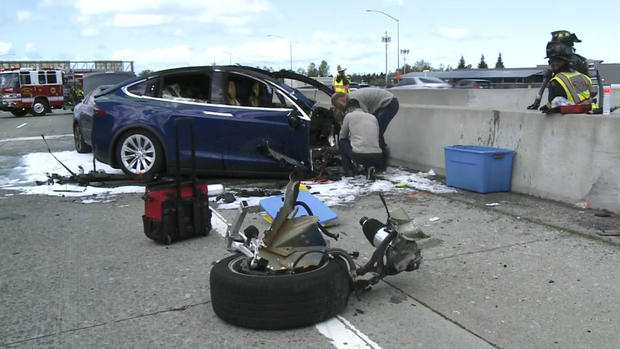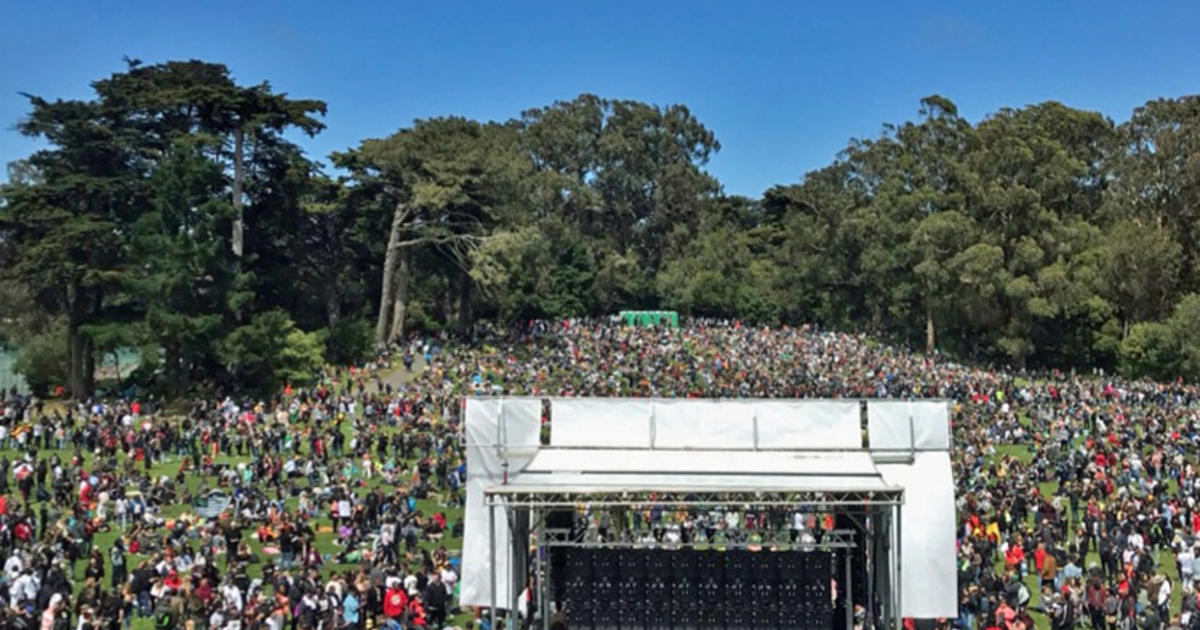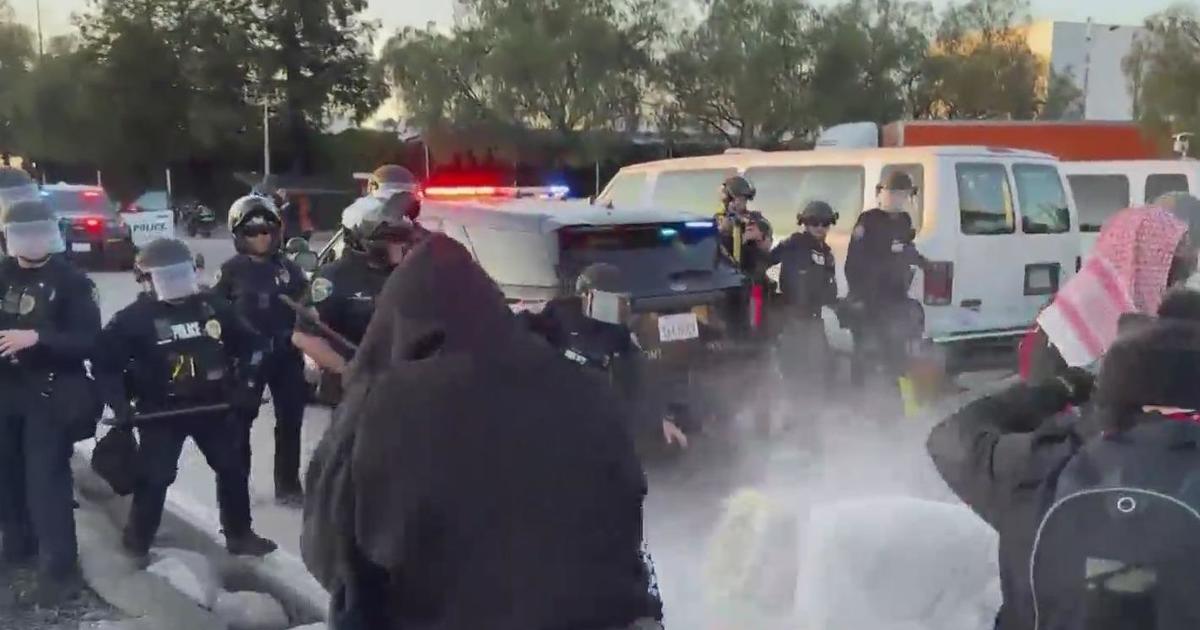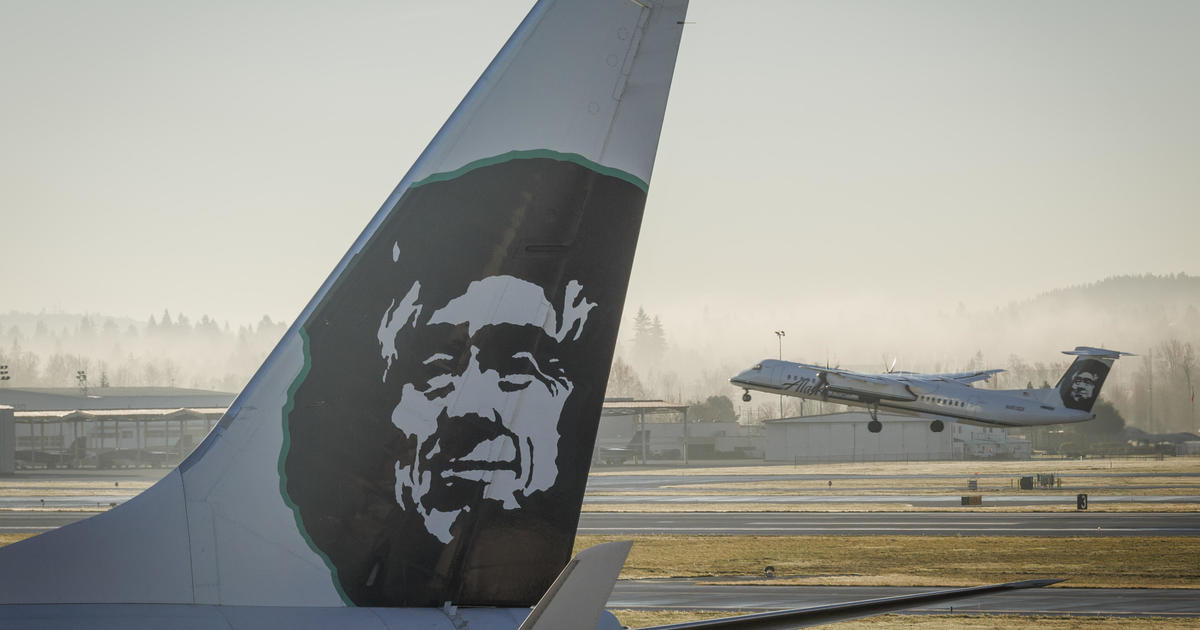Despite Warnings From Tesla, Study Finds Autopilot Drivers Still Aren't Paying Enough Attention
FREMONT (CBS SF / CNN) -- A day before a surprising admission from Tesla CEO Elon Musk this week concerning the company's prototype autonomous driving system, MIT researchers released a study that found that Tesla drivers are more distracted when they use the company's semi-autonomous Autopilot that is in Teslas now.
The findings support calls for the automaker to take more steps to keep drivers attentive, for their own safety, the researchers said.
Tesla Autopilot technology is designed to steer the car, stay in its lane and keep up with traffic on divided roads like highways. But Tesla acknowledges the software is imperfect and says that drivers should be prepared to take control of the vehicle at any time. Drivers are supposed to keep their eyes on the road and hands on the wheel, according to owner's manuals.
But despite the warnings from the company, the study found that drivers glanced more frequently away from the road, and thus paid less attention, when Autopilot was active. The MIT researchers also found that 33% of Tesla drivers did not have their hands on the wheel prior to taking control of the car from Autopilot.
"We put the research out there for people to start pondering about, 'Wait a second, what's going on here?'" said Bryan Reimer, associated director of the New England University Transportation Center at MIT.
Tesla did not respond to requests for comment on the study.
At Tesla's "Battery Day" and annual shareholder meeting this past Tuesday, Musk also said that in recent years the company undertook a fundamental rewrite of the company's Autopilot software.
"The improvements kind of started tailing off, and just not getting where they need to be," Musk said.
Musk has previously announced ambitious goals for the full self-driving system, such as a Tesla driving itself across the country in 2017, but they have fallen short. He's also said that he expects Tesla would have robotaxis and a million self-driving on roads this year, though just over three months remain in 2020.
With slow progress, Tesla owners have had to stay attentive behind the wheel -- and have grabbed headlines when they haven't done so.
Autopilot, which Tesla describes as a semi-autonomous safety feature, has already been cited as a factor in multiple high-profile deaths.
Walter Huang had a game active on his smartphone when his Tesla Model X crashed into a highway barrier in Mountain View in March 2018. Huang was relying on Autopilot and did not brake or steer away from the barrier.
The National Transportation Safety Board investigated and called for Tesla to develop a better way to sense if drivers are distracted. The NTSB reiterated recommendations that it first made in September 2017 when Joshua Brown died after his Tesla crashed into a tractor-trailer while Autopilot was active.
The NTSB, which investigates crashes and advocates for safety improvements, has also criticized the National Highway Traffic Safety Administration, which regulates motor vehicles, for failing to regulate partial autonomy systems like Tesla's Autopilot. Following the Huang investigation, NHTSA said it was reviewing the findings and that distracted driving is a major concern.
NHTSA said in a statement Thursday that it's aware of the MIT study and is reviewing it.
"The most advanced vehicle technologies available to consumers today provide driver assistance and require a fully attentive human driver at all times performing the driving task and monitoring the surrounding environment," NHTSA said. "Abusing these technologies is, at a minimum, distracted driving."
Tesla releases quarterly safety reports that compare accident rates with Autopilot active to when the technology is not used. Tesla says that accident rates are much lower with Autopilot active. But Tesla's reports do not detail what it defines as an accident, or on what roads Autopilot is used. Crash rates may already be lower on the roads where Autopilot is used most frequently.
Musk said earlier this week that the company is confident the probability of crashes with Autopilot can improve eventually to 10 times the industry average. Musk also said that Tesla will hopefully release a private beta of the full self-driving version of Autopilot in a month or so.
"People will really understand the magnitude of the change. It's profound," Musk said. "It's a hell of a step change."
Meanwhile, earlier this month, Canadian authorities said that the driver of Tesla Model S appeared to be asleep in a reclined seat, and that the vehicle appeared to be driving itself when it accelerated to 93 mph when they initially attempted to pull it over.
Tesla monitors driver alertness through torque on the steering wheel. But drivers may be able to give the appearance of alertness by resting an object on the steering wheel. Tesla competitor GM has opted to use a camera and eye-tracking technology to determine if users of its comparable Super Cruise software stay alert.
Tesla has promised improvements to Autopilot, but the company has not announced plans for more driver monitoring measures.
© Copyright 2020 CBS Broadcasting Inc. All Rights Reserved. This material may not be published, broadcast, rewritten. CNN contributed to this report.




